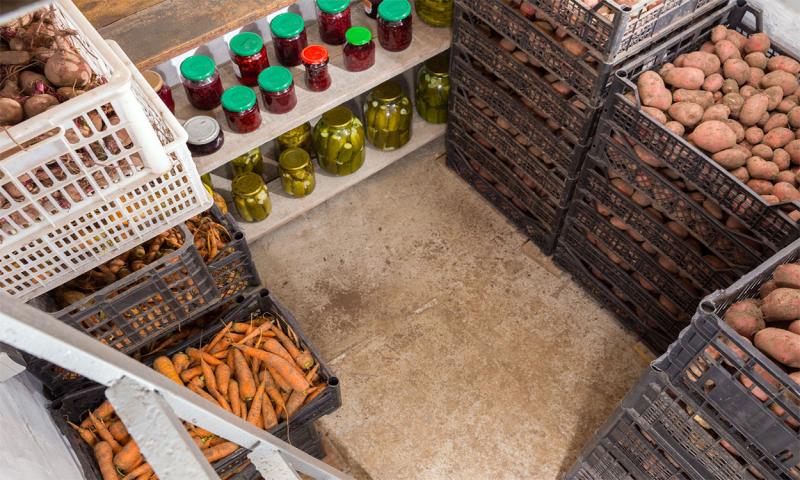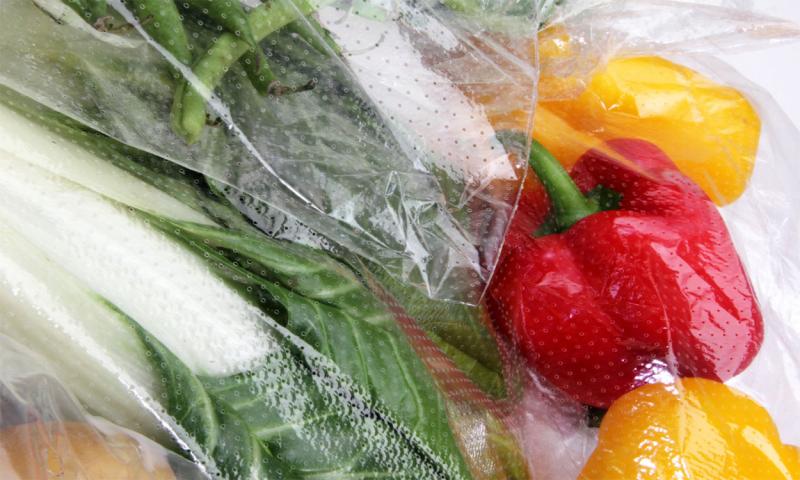
Written by Rhoda Burrows, former Professor & SDSU Extension Horticulture Specialist.
The storage life of various types of vegetables can be extended by several days or even months (depending on the type) by keeping them at recommended temperature and humidity levels.
Possible storage areas include places, such as cellars, attached garages, outdoor banks, pits or mounds. If cellars can be kept cold enough, they are usually better for prolonged storage. Areas in some basements will also remain cool enough (40 to 50 degrees Fahrenheit) during the winter for storing many vegetables.
Storage Environment
Temperature, humidity and ventilation are important factors in vegetable storage. Different kinds of vegetables require different storage conditions. Some need very cool temperatures, while others, such as tomatoes or squash, will be damaged by prolonged exposure to temperatures under 50 degrees Fahrenheit. Table 1 gives storage requirements for some commonly stored vegetables.
| Crop | Storage Environment |
|
|
|
|---|---|---|---|---|
| Asparagus |
|
|
|
|
| Basil |
|
|
|
|
| Beans (Green) |
|
|
|
|
| Beans (Lima, shelled) |
|
|
|
|
| Beans (Lima, un-shelled) |
|
|
|
|
| Beets |
|
|
|
|
| Broccoli |
|
|
|
|
| Cabbage |
|
|
|
|
| Carrots |
|
|
|
|
| Cauliflower |
|
|
|
|
| Cucumbers |
|
|
|
|
| Eggplants |
|
|
|
|
| Honeydew Melons |
|
|
|
|
| Lettuce and Other Greens |
|
|
|
|
| Muskmelon/Cantaloupe (Fully ripe) |
|
|
|
|
| Onions (Bulbs) |
|
|
|
|
| Onions (Green) |
|
|
|
|
| Parsnips |
|
|
|
|
| Peas |
|
|
|
|
| Peppers |
|
|
|
|
| Potatoes |
|
|
|
|
| Pumpkins |
|
|
|
|
| Radishes |
|
|
|
|
| Rutabagas |
|
|
|
|
| Squash (Summer) |
|
|
|
|
| Squash (Winter) |
|
|
|
|
| Sweet Corn |
|
|
|
|
| Sweet Potatoes |
|
|
|
|
| Tomatoes |
|
|
|
|
| Turnips |
|
|
|
|
| Watermelon |
|
|
|
|
* Ten to 14 days if green tops are left on.
** Longer storage times require curing at 60-68 degrees Fahrenheit for one to two weeks
with gradual lowering of temperature thereafter.
Handling and Care

Handle carefully to avoid bruising. Be sure all vegetables to be stored are free of disease, and periodically check stored produce to remove any rotted ones before the rot can spread to nearby produce. Generally, produce will keep longer if it is not washed prior to storage. If it is washed, make certain that it is air-dried before being put into storage, as pathogens thrive with moisture.
Most vegetables (except potatoes, cabbage and cauliflower) will store longer and remain in better condition if placed in perforated polyethylene bags.
- Cabbage will store better if the entire plant is harvested and the roots placed in moist sand.
- Carrots, broccoli and cauliflower, cucumbers, lettuce, peas, potatoes and acorn squash are sensitive to ethylene, which may be given off from apples, melons, tomatoes and other fruit, so store them separately from fruit to avoid off-tastes and color.
- Green tomatoes that have reached full size and have begun to lighten from dark to light green (known as “breaker” stage) are mature enough that they will continue ripening after harvest. Place them stem-down, with no more than two layers deep, on a padded surface. Storage at 55 degrees Fahrenheit will adversely affect the taste of any tomato that is not fully ripe. No tomato, ripe or unripe, should be exposed to temperatures under 50 degrees Fahrenheit.
- After digging potatoes, cure them by storing them in a dark, well-ventilated area at room temperature for a few days to cure them. Keep potatoes in complete darkness to avoid tuber greening. Long-term storage at 40 to 50 degrees Fahrenheit will maximize their shelf life.
- With the exception of acorn squash, most winter squash will improve flavor and keep quality by being placed in a warm room (80 degrees Fahrenheit) for a week or two prior to cooler, long-term storage.
Additional Resource
Additional harvest and storage information can be found in USDA Handbook 66: Commercial Storage of Fruits, Vegetables, and Florist and Nursery Stocks, revised Feb. 2016.


